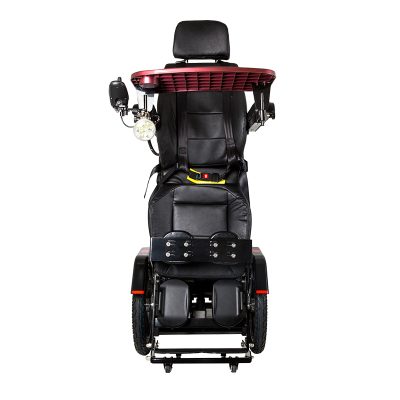The scientific foundation behind standing wheelchairs reveals a myriad of benefits that positively influence users’ health and well-being. This revolutionary mobility technology is grounded in biomechanics, physiology, and psychology. Let’s explore the science behind standing wheelchairs:
- Biomechanical Impact: Weight-bearing while standing helps maintain bone density, preventing issues like osteoporosis and fractures that can arise from prolonged sitting.
- Muscular Engagement: Standing engages muscles throughout the body, promoting muscle tone, joint stability, and functional strength.
- Circulatory Enhancement: The act of standing facilitates blood circulation, reducing the risk of pressure sores and promoting overall cardiovascular health.
- Postural Benefits: Standing promotes proper spinal alignment and posture, preventing musculoskeletal imbalances and related discomfort.
- Bone Health: Weight-bearing stimulates bone remodeling, a process essential for maintaining bone health and preventing bone degeneration.
- Neurological Stimulation: Standing encourages neural activation and sensory input, contributing to cognitive functioning and overall sensory awareness.
- Gastrointestinal Health: The upright position supports digestion, reducing issues like acid reflux and promoting regular bowel movements.
- Respiratory Support: Standing encourages deeper breaths, improving lung function, oxygenation, and respiratory muscle strength.
- Endorphin Release: The physical act of standing triggers the release of endorphins, natural mood enhancers that contribute to emotional well-being.
- Psychological Impact: The psychological benefits of standing, including improved self-esteem, reduced feelings of isolation, and enhanced social engagement, are rooted in both physiological and psychological mechanisms.
Standing wheelchairs embody a synergy of scientific principles that enhance users’ physical health, emotional wellness, and overall quality of life. As these devices continue to evolve, their positive impact will continue to shape the lives of individuals with mobility challenges.














